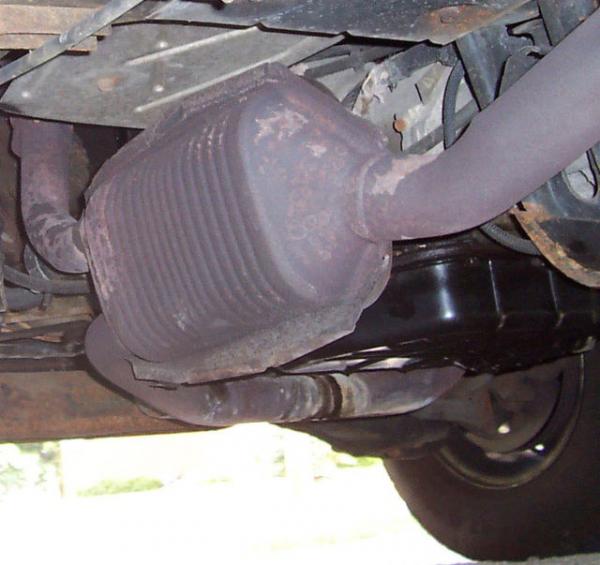

The main industrial purpose of platinum is in catalytic converters like this one. Photo by Wikipedia user Ahanix1989.
30 June 2014
The South African economy is facing a rocky period. But don’t blame the platinum strike or the union or workers involved. That labour dispute was a symptom, not the cause, of problems that had developed outside of the control of the workers.
Since labour is a major cost factor, it is the wages and conditions of workers that come under pressure whenever there is an economic crisis. And the only protection workers have is to organise since, without labour, there can be no production and no profit. Trade unions, therefore, are products of an essentially exploitative system; they exist to provide a more humane balance to that system.
But now that the strike is over, with declarations across the board that lessons have been learned, there is no room for complacency: the ending of the dispute does not signal the turning of any corner economically. In fact, if all the powers that be do not develop some innovative ideas, followed by radical action, we may be heading via further crises to a potential social catastrophe.
Clear heads are needed at this stage. And clear, honest analysis. This should be a time to review what happened, how it happened and, with the insight gained, work holistically to avert the potential tragedies that lie ahead.
Unlike natural catastrophes such as earthquakes or tsunamis, about which we have no control and little or no warning, social catastrophes are usually the culmination of a series of avoidable crises that develop over time. The situation on the platinum belt from the massacre at Marikana to the five-month strike this year provides a classic example.
Of course, in the immediate wake of the strike this week, there were celebrations on many fronts and even the rand rallied as currency dealers took a slightly more optimistic view of South Africa. But all the underlying problems that created the crisis in mining remain in place; ongoing global economic instability also makes matters potentially much worse.
Migrant labour remains a reality as do problems of housing and health. But it is deteriorating market conditions that hang, like a sword of Damocles, over the sector. And reactions to this could determine whether or not a serious social catastrophe can be avoided.
It is certainly not the miners, whether striking or not, who were to blame for the fact that the government handed out perhaps too many mining rights, resulting in a potential glut of platinum being produced. Nor can they be held responsible for the fact that the commodities boom between 2001 and 2008 saw a disproportionate share of profits going — mainly abroad — to shareholders and directors.
It is also government and the companies that should have been fully aware that recycled platinum would, sooner or later, start to undermine demand and prices. Because the main use of platinum is as a catalyst in the auto industry, which means that it can be constantly reused. As this column has already noted: more than 2 million ounces a year is already coming to market.
This is happening at a time of ongoing global economic crisis, with a declining demand for motor vehicles and, therefore, auto catalysts. At the same time, there is a substitute for platinum in the auto catalyst sector: palladium. And Russia provides more of this metal to the market than does South Africa.
This situation, in the absence of any innovative programmes and radical action could mean a decline in the platinum price and the profitability of various shafts which, in turn, may result in large-scale retrenchments. The gold sector, so far not directly involved, is also in the line of fire.
Because gold — perhaps even more so than platinum — can be subject to extreme price volatility; just look to the gold price fluctuations since 1971. So neither gold nor platinum, within the present arrangements, provide safe havens or any security for the domestic economy.
But if 30 000 or 50 000 miners end up being retrenched because of circumstances beyond their control, this will trigger what can only be described as a social catatstrophe. Because, by most estimates, every miner supports between eight and ten dependents, mainly in the rural areas, primarily in the Eastern Cape.
In such circumstances it will again be the poor who will suffer most. Without income from migrants, millions more hungry and desperate men, women and children will inevitably drift, in hope, to towns and cities, to urban areas where infrastructure is already inadequate and jobs for the unskilled are virtually non-existent. This is the future scenario to be avoided.